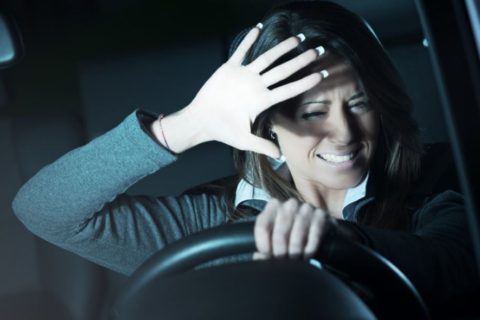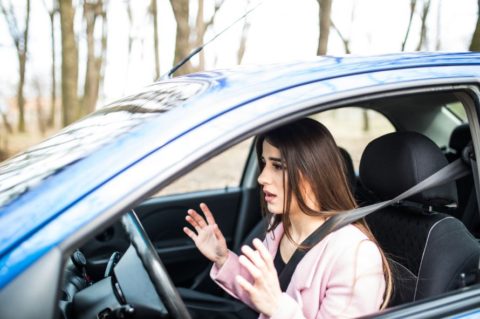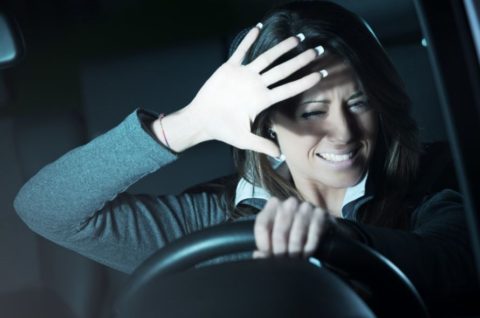
The Best Car to Drive after Sustaining a Concussion
Published on: mayo 17, 2019
What type of vehicle should you be driving in after you sustain a concussion? A Mercedes Benz? Rolls Royce? Cadillac? Subaru? Or the car you drove to Rehab in? Should it be the safest car on the market? Are you really going to buy a new car because you sustained a concussion? Or should you Uber or Lyft for the short-term? Obviously, these aren’t serious question to consider. The real question to ponder is “Should you be driving at all after a concussion?”
For years, physicians and rehabilitation specialists have crafted and modified various versions of “return to play” and “return to learn” guidelines to assist individuals with the re-integration process for sports and school. More recently, expert opinion has been put in print regarding “return to work” suggestions. These are all guidelines, and rare if ever does a patient follow such guidelines to perfection as designed. As with all other “protocols”, adaptation is necessary to meet the specific needs of a patient. Perhaps there is no other condition like a concussion where symptoms are so variable whereby each and every patient requires suggested guideline assistance with required adaptation. As the saying goes, “if you have seen one concussion, you have seen one concussion.”
 Until this past year, few of us addressed the issue of driving a motorized vehicle following a concussion. Yes, “Return to Drive”. I believe that we have all advised on the obvious and informed our patients not to drive immediately following a concussion, and perhaps we went as far as to offer a timeline of when it is safe to begin driving again. However, have we really addressed the issue of how one returns to driving safely? Is there even such thing as an “interval driving program” similar to how we methodically and safely progress athletes back to a sport and students back to the classroom? If so, how is this possible? Do we advise only left turns for the first week post-concussion? Do we limit cervical rotation and require the use of rear-view mirrors and backing up cameras? Obviously, these are not practical ideas to implement. However, there are many ways that we can develop sound guidelines for someone to return to driving in a safer manner.
Until this past year, few of us addressed the issue of driving a motorized vehicle following a concussion. Yes, “Return to Drive”. I believe that we have all advised on the obvious and informed our patients not to drive immediately following a concussion, and perhaps we went as far as to offer a timeline of when it is safe to begin driving again. However, have we really addressed the issue of how one returns to driving safely? Is there even such thing as an “interval driving program” similar to how we methodically and safely progress athletes back to a sport and students back to the classroom? If so, how is this possible? Do we advise only left turns for the first week post-concussion? Do we limit cervical rotation and require the use of rear-view mirrors and backing up cameras? Obviously, these are not practical ideas to implement. However, there are many ways that we can develop sound guidelines for someone to return to driving in a safer manner.
The key to developing a sensible guide for your patients is to first recognize and identify typical post-concussive symptoms that would interfere with one’s ability to drive safely. Think about the following:
- Sensitivity to light (sun in eyes, oncoming headlights at night)
- Sensitivity to noise (driving in an area with traffic and horns honking, radio being played, babies crying in the car seat)
- Lethargic (decreased reaction time for stop signs, sudden stops)
- Difficulty remembering (missing turns, slowing down for kids in neighborhood)
- Altered vision (speaks for itself – should not be driving!)
 These are just a few examples of how one’s driving can be altered following a concussion. None of these examples alter the circumstances for the better. The first approach is to educate the patient on how these symptoms impact safe driving. Acceptance is important, knowing full well a patient may not have any other mode of transportation to make clinic visits, get to work, etc…..
These are just a few examples of how one’s driving can be altered following a concussion. None of these examples alter the circumstances for the better. The first approach is to educate the patient on how these symptoms impact safe driving. Acceptance is important, knowing full well a patient may not have any other mode of transportation to make clinic visits, get to work, etc…..
If at all possible, simple tactics can be implemented such as no driving at night if oncoming headlights impair vision. Do not play the radio if it is a distraction. Wear sunglasses, a hat, use the window shade, etc… to minimize sunlight. Take breaks and do not drive for extended periods of time to allow for focused concentration. Keep extra space between vehicles to allow for additional time to react. Regardless of a concussion or not, do not text and drive or even use the cell phone to hold a conversation while driving as it in and of itself can be a distraction.
These are just a few tips to help your patient integrate back to safe driving. Take the next step and create a patient education form that puts in writing simple driving tips post-concussion.